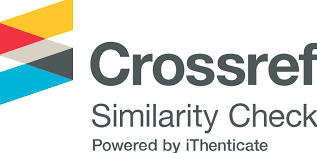ẢNH HƯỞNG CỦA CƠ CHẤT, NHIỆT ĐỘ, ĐỘ ẨM ĐẾN SỰ SINH TRƯỞNG CỦA NẤM Coprinus radians (Desm.) Fr. 1838 NV1 (tên mới Coprinellus radians (Desm.) Vilgalys, Hopple & Jacq. Johnson 2001)
Từ khóa:
Coprinus radians,, sinh trưởng, cơ chấtTóm tắt
Kế thừa các kết quả nghiên cứu trong và ngoài nước cho thấy, dăm gỗ khi được gây cấy chủng nấm mục phù hợp với các thông số công nghệ nuôi cấy phù hợp sẽ tạo ván dăm không cần dùng keo dán. Nhiều loài nấm ở Việt Nam thuộc lớp Nấm đảm Basidiomycetes có khả năng sinh trưởng trên dăm gỗ. Loài nấm Coprinus radians (Desm.) Fr. 1838 NV1 (tên mới là Coprinellus radians (Desm.) Vilgalys, Hopple & Jacq. Johnson 2001) đã được tuyển chọn để chuyển hóa dăm gỗ thành dạng phù hợp cho sản xuất ván bio-composite vì khả năng sinh trưởng nhanh nhất trong các chủng thử nghiệm. Để rút ngắn thời gian nuôi cấy nấm trên nguyên liệu, tiết kiệm về năng lượng và nhân công cần nghiên cứu thành phần cơ chất, nhiệt độ, độ ẩm phù hợp. Kết quả nghiên cứu đã xác định có thể sử dụng pepton, cao nấm men, bột đậu tương, bột ngô kết hợp cám gạo để bổ sung vào cơ chất dăm gỗ để nuôi cấy nấm mực Coprinus
radians. Thành phần cơ chất gồm gồm 90,7% dăm gỗ được bổ sung 4% cám ngô; 4% cám gạo; 1% CaCO3; 0,3% bột đậu tương là phù hợp để nuôi cấy nấm Coprinus radians NV1 nhằm tạo ra lượng lớn sinh khối nấm cho tạo ván dăm không sử dụng keo dán. Nấm Coprinus radians sinh trưởng tốt nhất ở nhiệt độ 25 ± 2oC, độ ẩm 75 - 85%.
Tài liệu tham khảo
1. Alan, 2001. Metabolic and environmental control of development in Coprinus cinereus. A dissertation submitted to the swiss federal institute of technology zurich for the degree of doctor of natural sciences.
2. Chaiyama V., Petcharat V. and Kritsaneepaiboon P., 2007. Some morphological and physiological aspects and cultivation of Coprinus comatus. Songklanakarin J. Sci. Technol., 29: 261 - 274.
3. Cồ Thị Thùy Vân, 2015. Nghiên cứu quy trình phân lập, nhân giống dạng dịch thể để nuôi trồng nấm đầu khỉ(Hericium erinaceus (Bull.: Fr.) Pers.) và tách chiết một số polysaccharide có hoạt tính sinh học. Luận án tiến sĩ Công nghệ sinh học. Trường Đại học Bách khoa Hà Nội.
4. Dulay R. M. R., Parungao A.G.I.V., Kalaw S.P. and Reyes R.G., 2012. Aseptic cultivation of Coprinus comatus (O. F. Mull.) Gray on various pulp and paper wasters. Mycosphere, 3(3): 392 - 397.
5. Hiroshi S. and Keiko F., 1999. Cultivation of Coprinus comatus Pers. Japan. Appl. Publ. No JP: 11 - 125365.
6. Jang Myoung - Jun, Yun - Hae Lee, Jun - Jie Liu and Young - Cheol Ju, 2009. Optimal Conditions for the Mycelial Growth of Coprinus comatus Strains. Mycobiology, 37(2): 103 - 108.
7. Korner I, Kuhne G, Pecina H, 2001, Unsterile Fermentation von Hackschnitzeln-eine Holzbehandlungsmethode fur die Faser - plattenherstellung. Holz Roh Werkst 59:334 - 341.
8. Nguyễn Hữu Đống, Đinh Xuân Linh, 2000. Nấm ăn - nấm dược liệu, công dụng và công nghệ nuôi trồng. Nhà xuất bản Hà Nội.
9. Nguyễn Như Chương, Lê Xuân Thám, Nguyễn Thị Phương, 2011. Bước đầu nghiên cứu nuôi trồng nấm đùi gà khổng lồ Macrocybe gigantea phát hiện ở Bình Dương, Việt Nam. Hội nghị Khoa học toàn quốc về Sinh thái và Tài nguyên sinh vật lần thứ 5.
10. Phạm Thị Thu, Lê Văn Vẻ, Nguyễn Duy Trình, Vũ Thanh Hải, 2017, Ảnh hưởng của cơ chất, nhiệt độ, độ ẩm đến sự sinh trưởng và phát triển của nấm Coprinus comatus (O. F. Mull.). Tạp chí Khoa học Nông nghiệp Việt Nam, 15(5): 545:552)












